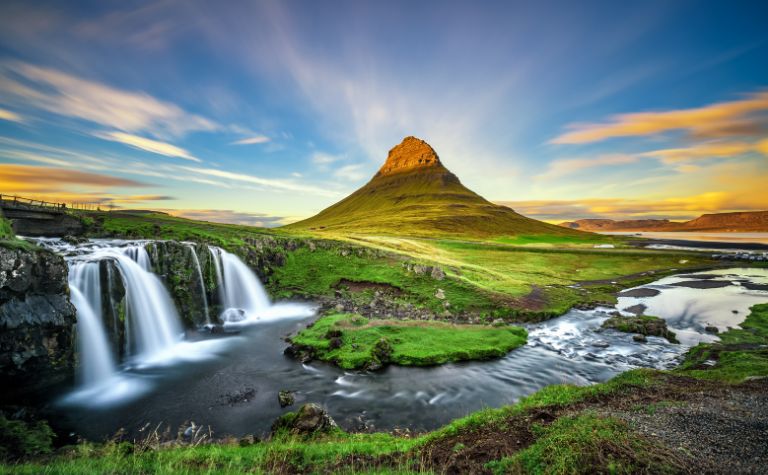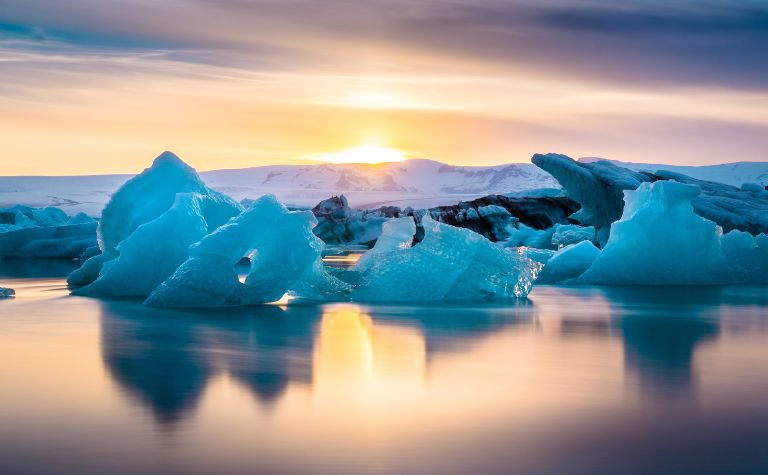Iceland is a popular tourist destination for those seeking adventure and opportunities to admire nature at its finest.
One of the country’s highlights is the Golden Circle, a picturesque circular route offering spectacular natural wonders in the country’s southwestern part.
What should people know about the Golden Circle?
The Golden Circle offers many natural wonders, such as the Gullfoss Waterfall, Thingvellir National Park, and the Northern Lights.
It is accessible throughout the year, but the roads can get icy in the winter. Self-drives are easy, but guided tours can be very informative.
There is a lot to do and see in Iceland’s Golden Circle, and this article will explain what one needs to know when planning a trip there.
Also, see Why Do Icelandic People Asian? to learn more about Icelandic culture.

How long does it take to travel to the Golden Circle?
It takes 7 minutes to travel to the Golden Circle from Reykjavik’s city center. This 7-minute drive moves onto Route 36, one of the roads forming the Golden Circle’s circular route.
It is a 3 km (1.86 miles) drive to the Golden Circle from the middle of Reykjavik [1].
However, if traveling from Reykjavik to one of the Golden Circle’s main attractions, here’s how long it will take:
| Distance from Reykjavik City Center | Time from Reykjavik City Center | |
| Gullfoss Waterfall | 116km/72 miles | One hour and 45 minutes |
| Thingvellir National Park | 48km/30 miles | 45 minutes |
| Geysir Geothermal Area | 107km/66 miles | One hour and 32 minutes |
What can people see on the Golden Circle?
People can see some of Iceland’s main natural attractions in the Golden Circle. These include Gullfoss Waterfall, Thingvellir National Park, and Geysir Geothermal Area.
The Laugarvatn Fontana and the Northern Lights are also visible on a clear winter evening.
The Golden Circle can be explored via a self-drive tour, as the route is easy to navigate.
However, some companies also offer guided tours of various lengths, allowing guests plenty of time to explore the sights and attractions, such as the ones below.
Also, see Why Are Scandinavian Women So Beautiful? to learn more about the region.

Gullfoss Waterfall
Gullfoss Waterfall is a spectacular, two-stage waterfall that cascades into the Hvítá River Canyon [2]. The waterfall can be viewed from above using the easily accessible platform.
During the summer, the waterfall is in full force and creates a lot of water droplets, which often form rainbows.
Although it freezes when temperatures drop in the winter, visitors can still admire the interesting frozen formations.
Thingvellir National Park
Thingvellir National Park is Iceland’s only UNESCO World Heritage Site [3] and one of only three national parks in the country.
It has a rich cultural and geological history as it was the site of the country’s first parliament, Althing, and is home to the Mid-Atlantic Ridge [4].
Iceland’s first parliament was formed in 930 AD, five decades after the country was settled.
The settlers chose Althing [5] due to its central location, but it was eventually moved to Reykjavik when the city became more populous.
In Thingvellir National Park, the rock where the parliamentary leader held sessions can still be seen.
Iceland is divided by two tectonic plates:
- North American
- Eurasian
Thingvellir National Park is the best place to see this divide, where the Mid-Atlantic Ridge forms a dramatic divide in a steep valley.
Geysir Geothermal Area
Geysir Geothermal Area is also called the Haukadalur Geothermal Field and has various sprouting hot water geysers [6] and bubbling mud pits.
Two of the most popular geysers are the Strokkur and the Great Geyser, which create powerful hot water fountains every few minutes and make for interesting videos and photos.
The Geysir Geothermal Area also has multiple fumaroles and volcanic openings that emit sulphuric gases and steam into the air.
The fumaroles have unusual yellow patterns around them, which are crystallized sulfur molecules.
Also, see Do Danes and Swedes Hate Each Other? to learn more about the region.
Northern Lights
During winter, the Golden Circle can be a good spot to watch the Northern Lights, colorful magnetic light formations that make interesting patterns in the sky.
The conditions, however, need to be optimal for the best views. It’s best to drive along Route 37 [7] on a clear night.
Game of Thrones Filming Locations
The Golden Circle is one of the best places for Game of Thrones (GoT) fans to see where the popular TV series was filmed.
Below are the most famous GoT filming locations in the Golden Circle:
- Hengill Mountain. This spot is located south of Thingvellir National Park and is a volcanic mountain. Visitors can hike up the mountain or admire it from the base.
- Thorufoss Waterall. Season six, episode four of Game of Thrones was filmed close to Thorufoss Waterfall and showed Daenerys’ dragon flying over and burning the other dragons below.
- Oxararfoss Waterfall. Oxarafoss Waterfall is located close to the dramatic and beautiful Almannagjá Gorge [8] in Thingvellir National Park. It featured The Bloody Gate, the guarded castle on the way to Eyrie, and was commonly seen in season four.
Laugarvatn Fontana
Laugarvatn Fontana is a luxurious spa and resort built around the geothermal springs in the area.
It is located in the middle of the Golden Circle route, and locals and tourists relax in the hot steam baths, saunas, and steam rooms.
It is also the perfect place to have lunch as the resort has a restaurant that serves delicious local food.
For those in a hurry, there is an on-site store selling pastries, cakes, and bread.
When is the best time to travel to the Golden Circle?
The best time to travel to the Golden Circle is year-round, though it may depend on the visitor’s personal preferences.
Summer is typically busy, but the days are longer.
In winter, there are fewer people and fewer daylight hours, but the Northern Lights may not be visible.
The Golden Circle can get busy during the daytime in the summer, but the crowds can be avoided by visiting the main attractions in the late afternoon and early evenings.
Winter is the most peaceful time to visit, but visitors may need to drive slower if the roads are icy or snowy, and the authorities haven’t de-iced them yet.
Conclusion
Exploring Iceland’s Golden Circle is an informative and enjoyable experience for anyone visiting the country.
Also, see Why Is Denmark So Rich? to learn more about the region.
